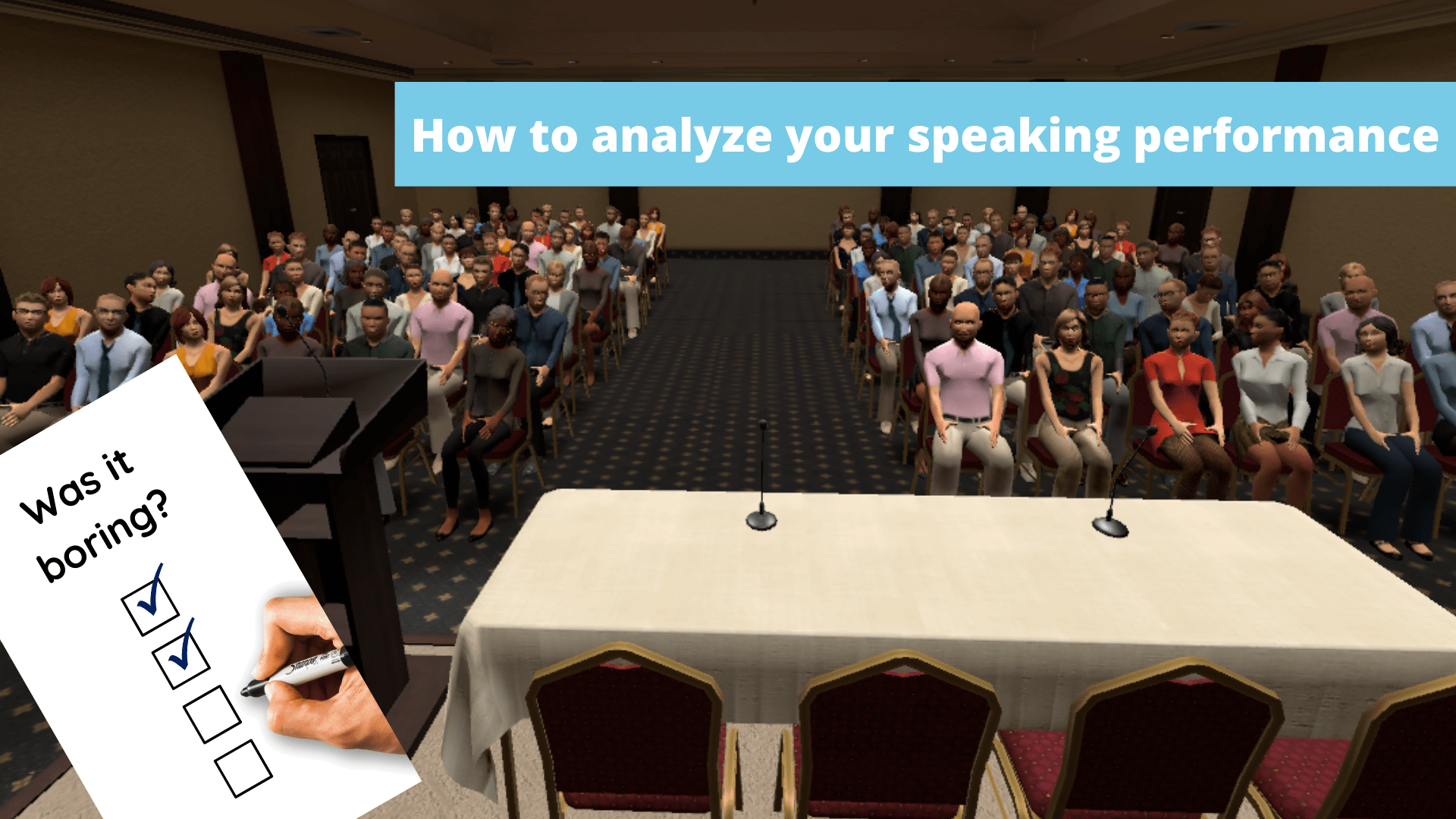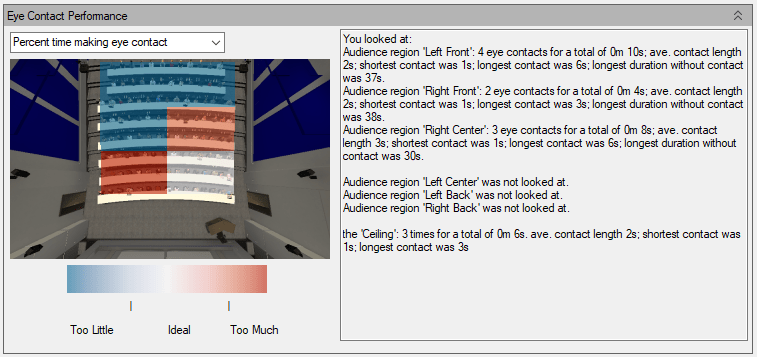Your cart is currently empty!

How to analyze your speaking performance – Part I
Leaving the presentation venue, two questions remain in the speaker’s head: was it good? Was I good? Evaluating your performance can be an unpleasant, yet necessary, task due to all the subjectivity around it.
Objectively analyzing your performance
Most of us tend to focus on one or two points (usually the negative ones) and form our opinion based on them. This is not only biased but extremely counter-productive.
You need some distance to a more objective evaluation of yourself. The best way to do it? Recording. Now, how can I say that it was a good presentation?
I advise you to build a list of points you consider vital for a successful presentation and then focus on one at a time. Were you good at that specific thing? This is important while analyzing your performance since it allows your mind to focus on one specific thing at a time. This will help you be way more objective in your analysis. It is also a good way to make the most of your training, looking for improvement point by point, don’t missing any detail. You can use this post as a guideline to build your list (don’t forget to check part II).
Now, let’s look at the main points to consider during the analysis. Look at each one at a time, watching the video as many times as you need.
Posture
The first thing your audience will observe, even before you start talking is your posture. From the first glance, they will try to understand you and know who you are by the way you stand, walk, and smile.
For a more accurate analysis, mute the video and pay attention to your posture. Are you standing straight or bending over a piece of paper? Do you move around? Do you look frozen? Does your posture show confidence? Try to look at yourself the same way your audience will.
Check if your clothes are appropriate and consistent with the message. Training with all the clothes and personal accessories you’ll use in the presentation is vital. It helps you to decide what will make you feel comfortable and confident, avoiding discomfort that could harm your performance.
Connection with the audience
Your ability to connect is as important as your message. A good message is lost in the distance some speakers put between themselves and the audience.
Eye contact is the most immediate way to establish contact with anyone. Pay attention to your video. Were you looking at your audience? The old tactic to look at a point in the horizon isn’t good enough. You need to actually look at your audience members. All of them. Is the audience too big? Divide the room into sections and take your time looking at each section.
If you’re using Virtual Orator for training, you get good help at this point. It provides you detailed feedback about your eye contact.

Yet, do not forget that connecting is more than looking at someone. Observe your facial expression, your smile, your movements. Do you seem likable? Accessible? Would you approach a person with your posture? If the answer is no, then you need to work on your skill. It is a good time to resort to a virtual audience that allows you to practice repeatedly, without harm to your social life.
A good speaker must look confident and comfortable. Make your speech engaging – interact with your audience, ask them questions, pause when you need to, smile. Speak to each of them directly, instead of speaking to the “room”. Make them feel important.
Tone and Voice
When presenting, your voice and tone are your work tool. Check if your voice volume is loud enough for the people in the back of the room to hear you clearly. Do you speak too fast? Are you taking breaths and pausing during your speech? Pauses help to keep the energy you need to keep the audience focused on you.
When it comes to the tone, can you keep it conversational? It makes your presentation more interesting and helps you connect with the audience. If you tend to be more formal or use a more academic tone, you’ll sound distant and perhaps a little arrogant to your audience.
Now that everything seems aligned with your personal performance let’s take a look at your message and other details of the actual presentations in part II.
Cátia is a psychologist who is passionate about helping children develop and train social skills.


Leave a Reply